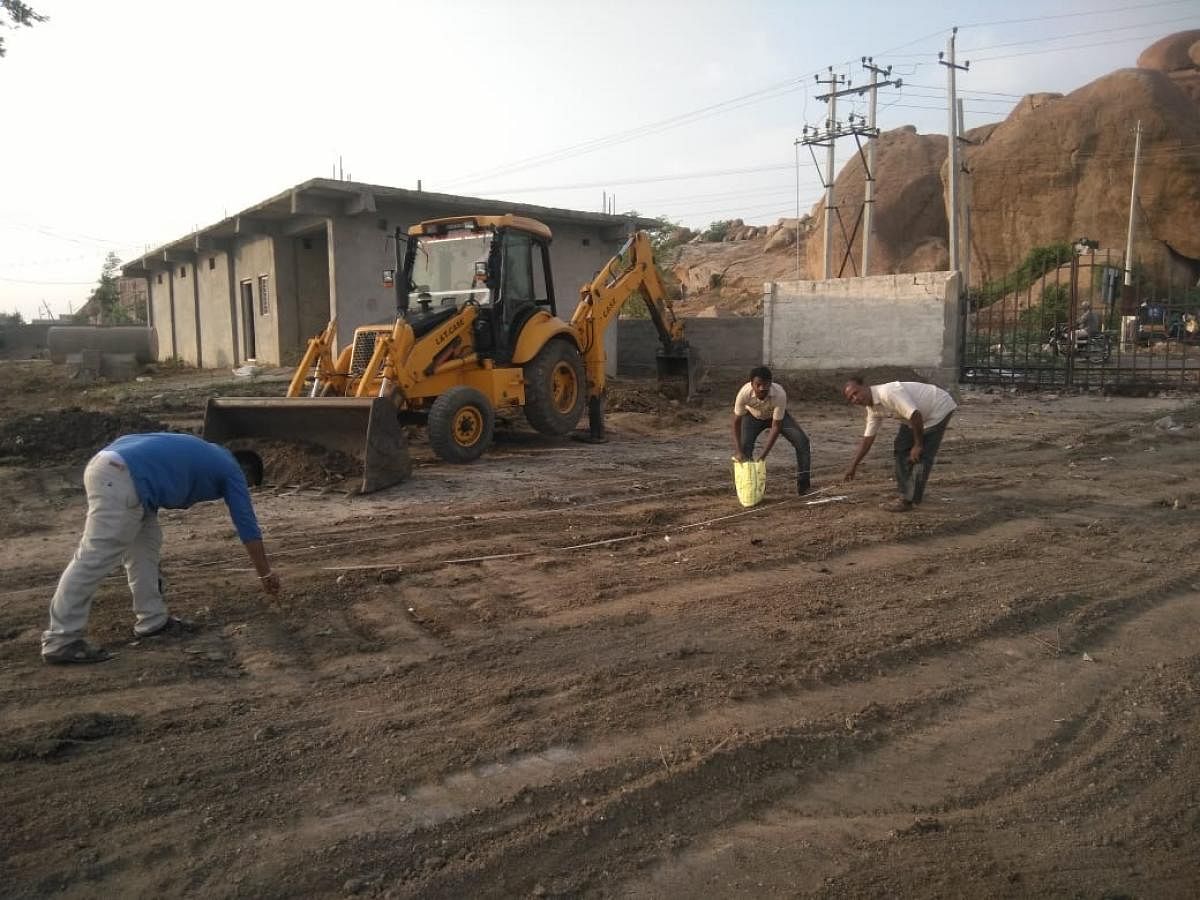

It all began recently at Koppal town. A group of 13 like-minded youths from different professions formed a forum called Banajiga Samana Manaskara Vedike. The purpose was to undertake works that helped local communities in the region.
To start with, they decided to felicitate meritorious students for their academic excellence. Then they did not have the faintest idea that their small step would soon land them in a burial ground with a greater purpose.
The Vedike members pooled in money and felicitated meritorious students in Koppal town, in May. As the contributions were in excess, they decided to spend the money on projects that helped local residents.
Small steps first
“During a discussion, we stumbled upon the idea of developing the burial ground behind Sri Gavimath,” Doddesh Yaligar, a Vedike member explains.
As burial spaces are often highly valued for their spiritual and emotional connect, the idea found more support.
What drew the Vedike’s attention to the burial ground was its dire state. Benign neglect was more often the reason for the plight of the burial ground.
Residents too had ignored it for years. Bushes and plants like Bellary Jaali (Prosopis juliflora) had grown all over the ground. It was used by local people as a dumpyard. Drunkards and petty criminals also used this space.
“People attending funeral would often complain about sweltering heat as the ground did not have trees. Bidding adieu to their loved ones was a traumatic experience. However, no one thought about bringing about a change. This very
attitude and the plight of the ground encouraged us to improve the place where our elders have been laid to rest,” Doddesh adds.
Gavisiddappa Koppal, a retired high school teacher guiding the Vedike, says, “The burial ground shouldn’t be a place that generates fear. Why should negative thoughts hit our minds while in the burial ground?”
The Vedike members finalised an action plan for the revival of the ground and consulted community elders who gave a reflective thought and advised them of better ways.
After a survey, the cleaning drive began. An earth-moving machine was given free of cost for the purpose, while the members paid for the fuel. The ground was cleaned in four days.
The Vedike members effectively used social media tools to involve local enthusiasts. The move received an overwhelming response.
After the cleaning, they planted 300 saplings. The forest department donated 150 saplings in the first phase.
Around 300 enthusiastic men, women and children of different age groups and belonging to different castes and communities dug up trenches and planted saplings.
After the saplings were planted, they all relished some food at the burial ground itself. “Consuming food at the ground was a strategic move to break the myth about certain beliefs associated with the burial ground,” Basavaraj Bollolli, an industrialist explains.
Two people have been employed at the ground to dig pits for the burial. The Vedike has roped them in to protect and nurture the saplings. It has decided to
disburse wages monthly to the duo for
the purpose.
On the other hand, the forest department staff too visit the ground often to ensure that saplings are nurtured properly.
The Vedike has proposed to build a water tank to ensure regular water supply to the saplings.
“There will be a sitting facility under every tree. We’ve vowed to execute all works that make the funeral process a comfortable and memorable one,” Doddesh adds.
The residents have voiced cautious optimism about the move. To many, it is a step in the process of reclaiming burial ground as sacred.
Terming the Vedike members as burial ground-loving hobbyists, Basavaraj Bollolli says, “The move can change the way residents relate not only to their past, but to their present. It is definitely a visionary move to create an ideal resting place.”
Transformative impact
Many in the town believe that the effort has a transformative impact. They also feel that it will motivate people beyond the borders of Koppal. In fact, people in the surrounding areas have shown interest in the effort and have come forward to take up similar activities.
Marishantaveer Shettar, a high school teacher, views the work as a sign that the public wish to engage with environmental projects.
By showing reasons for Koppal residents to connect with the ground even if they don’t have a familial connection, the Vedike intends to generate the interest for similar moves to properly restore the water-starved landscapes.